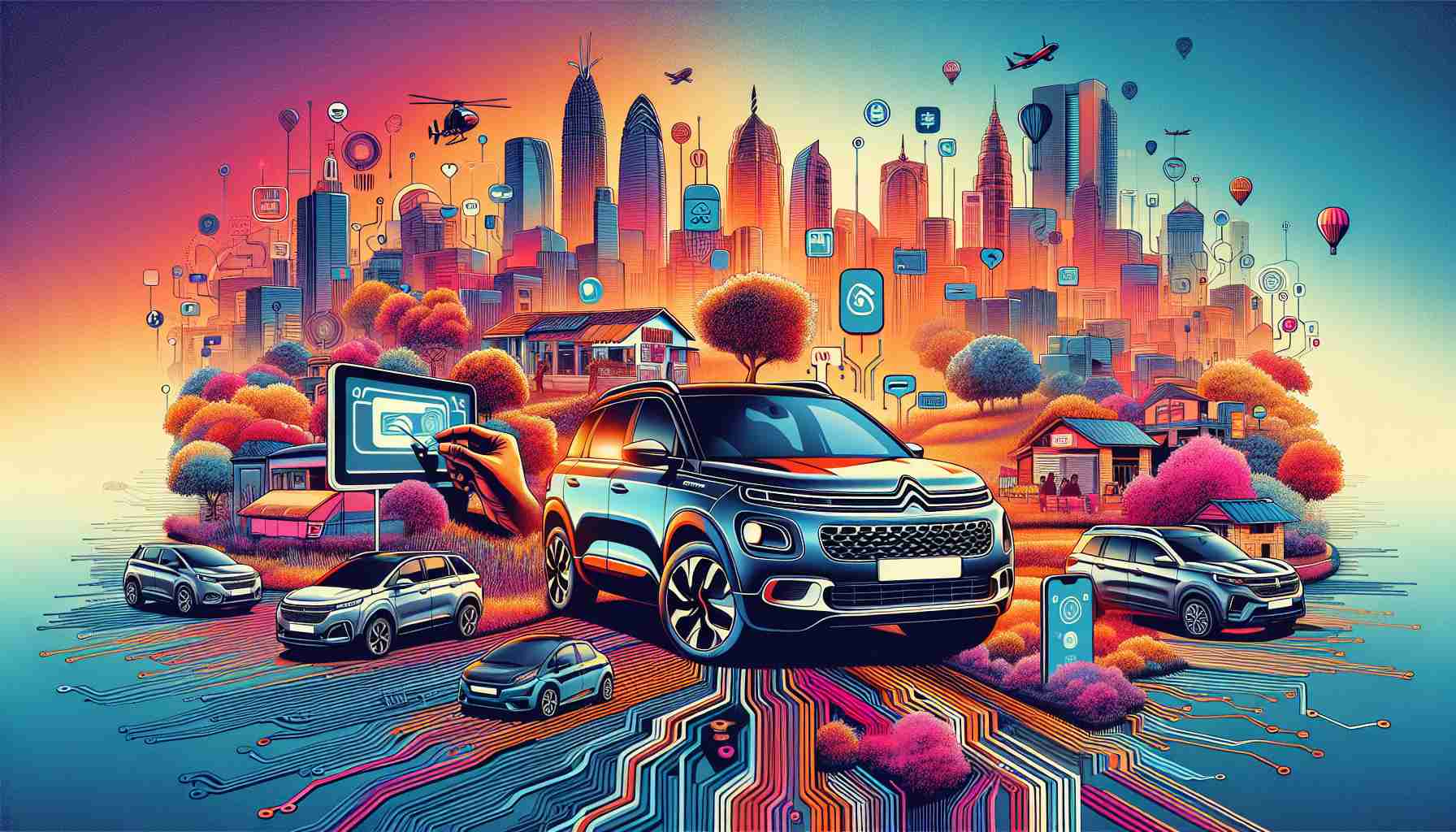In a recent technological advancement, Citroën has integrated a novel payment feature into their C3 Aircross SUV AT, now available in showrooms throughout India. This system, powered by Sheeva.AI’s SheevaConnect suite, heralds a new age of convenience for vehicle owners.
Defying expectations with its economical pricing, the Citroën C3 Aircross SUV AT stands as one of the most affordable mid-sized SUVs in India. Its appeal is heightened by the latest addition of an in-vehicle payment system. This innovative feature enables seamless fuel payments using the MyCitroën Connect mobile app, linked with any preferred Unified Payments Interface (UPI) provider. Motorists can refuel at over 32,000 gas stations within the country without the hassle of manual transactions.
Evgeny Klochikhin, the visionary behind Sheeva.AI, expressed excitement over enhancing the Citroën driving experience in India. The goal is to streamline the payment process with a touch of security, leveraging precise vehicle positioning for on-the-spot transactions.
Drivers benefit from an astonishingly swift and simplified system where they arrive, refuel while an attendant scans a QR code, and continue their journey effortlessly with an electronic receipt sent directly to their mobile app.
Looking beyond fuel payments, Sheeva.AI has hinted at upcoming expansions to include parking and toll payments, signaling a broader scope of in-car payment applications. With an extensive global rollout underway, the company is mapping millions of services, such as fuel pumps and EV chargers, into its location-based platform. In a strategic collaboration, Sheeva.AI also joined forces with Visa Acceptance Solutions to introduce a robust tokenization platform, harnessing Visa’s expertise to facilitate secure in-car commerce.
Current Market Trends:
The automotive industry is increasingly integrating digital technologies into vehicles, seeking to make them more than just a mode of transportation. Connected cars with in-car payment systems are part of an evolving trend towards offering consumers enhanced convenience. The Indian automotive market is on the cusp of this transformation, embracing technologies that combine connectivity, ease of use, and personalization.
Several companies globally are exploring ways to incorporate electronic wallet technology into their vehicles, aiming to create a hassle-free transaction experience. The market trend is towards building ecosystems within the cars that bring together navigation, entertainment, and commerce, making for a more comprehensive driving experience.
Forecasts:
The demand for in-car payment systems is expected to grow significantly as consumers look for more convenience and as vehicles become increasingly connected. The market for such payment systems is projected to expand with the rise in electric vehicle sales and the development of smart city infrastructure. As digital adoption increases, it’s likely that an increasing number of vehicle manufacturers will include in-car payment features in their offerings.
Key Challenges and Controversies:
Privacy and security are primary concerns for consumers when it comes to in-car payment systems. Ensuring that personal and financial data is adequately protected against cyber attacks is essential. Another challenge is interoperability, as various systems and standards need to be compatible across different regions and service providers. Additionally, there may be controversies related to data ownership and monetization, where questions arise about who benefits from the data generated by in-car transactions.
Advantages:
– The primary benefit is convenience, as drivers can make payments for fuel, parking, and tolls without the need for physical cards or cash.
– Increased safety by reducing the need to interact with POS terminals, which can be a hygiene concern, especially during times like a pandemic.
– Potential for better budget and expense tracking as all vehicle-related expenses are recorded in one place.
Disadvantages:
– Security concerns due to possible data breaches and cyber attacks.
– May induce additional expenses for users if service fees apply.
– Reliance on connectivity and technology means that technical issues or outages could impede the payment process.
Conclusion:
With its new in-car payment system, Citroën is positioning itself as a forward-thinking player in the Indian automotive market. As this technology becomes more widespread, it will likely reshape the expectations consumers have of their vehicles—casting them not just as modes of transport, but as mobile hubs capable of multiple functions.
For more information on Citroën, please visit their official website via this link. Please note that visiting external sites should be done at your own discretion and understanding of cybersecurity practices.
The source of the article is from the blog kewauneecomet.com

